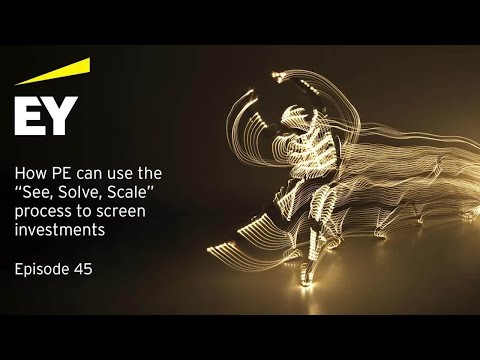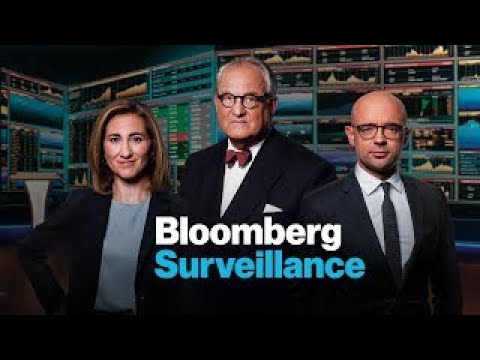How PE can use the ‘See, Solve, Scale’ process to screen investments

[Music] partnering with a private equity group has become especially attractive for founders of lower and middle market companies that aim for transformational sustainable growth as active and engaged investors private equity not only brings capital but specialized industry expertise and experience and generally a large network of specialists and operating resources and all this without having to access public markets but to which entrepreneurs and founders are we seeing private capital flow and what factors are actually influencing those investment decisions my guest today is danny washay executive director of the nelson center for entrepreneurship at brown university and author of see solve scale how anyone can turn an unsolved problem into a breakthrough success during our chat we discussed how much of the same c soft scale process that has empowered so many entrepreneurs can actually be used by investors as a screen for potential investments we also dive into how the legacy of culture bias and ways of doing business and private equity can shape investment decisions and cause investors to overlook promising opportunities this was a really fascinating conversation and i think highly relevant to private equity investors today in today's super competitive deal environment pe really needs to look for those uncut gems that have potential to shine and to do so you need to look in places you've not potentially looked at before i really hope you enjoy our conversation danny you've been teaching the entrepreneurial process for what over 17 years now can you perhaps share with us the core focus of your research and some of that teaching i devised this as you call it entrepreneurial process which enables you to learn and master and then apply a series of steps in a process that helps you in the words that i use to define entrepreneurship apply a structured process for solving problems and that's the definition that i use in all my teaching at brown and around the world that i use in my role as the executive director of the nelson center for entrepreneurship and now in this book that i've written called see solve scale how anyone can turn an unsolved problem into a breakthrough success i mean tell us a little bit about the book i'm imagining the last 17 years you've been you've been building on your your experience and your thesis and it's all kind of culminated into being able to share this more widely with the world i wrote this book that is a reflection of that structured process that i've been teaching in the classroom and it comprises these three steps which are c solve scale so if you're gonna solve a problem i advise that you start by defining the problem and that's not at all a trivial step i call that the c stage and we can get into what that means and why it's so important and how you do it that c stage is the most important part of the process and it's actually a place where lots of entrepreneurs especially tech entrepreneurs get tripped up and also investors get tripped up the main thing i tell people to avoid is don't be a solution in search of a problem and as i say both entrepreneurs especially tech entrepreneurs and especially tech investors of all types early stage and private equity investors get tripped up there because they get seduced by some what looks like cool technology but it's actually not directed to solving a problem the second stage is solve which is develop a small scale solution something that's going to be developed iteratively not perfect in the beginning but on a small scale we are not going to layer significant resources into that solution quite yet and again this is a place where i think especially private equity investors get tripped up because sometimes they layer way too many resources into a proposed solution way too early and don't give it that room to iterate and breathe and figure out what is the solution that finally they should layer resources into and then eventually that third step is scale and i call it developing a sustainability model which means not only scale but long-term impact and because you can have scale but it might be a fad you know short term but what we're looking for is something that's going to fundamentally solve a strong and enduring problem and that means scaling a solution over the long term when i think about private equity and i think about how investment decisions are typically made i mean it's usually made on looking at data right it's looking at what does a forecast look like you know what's my scan of the commercial opportunity but i would also argue there's probably this element of almost a gut feel or judgment or intuition and so that that combination if you will really will contribute to where they make the decisions to put their capital how does your research help us think about how private equity looks at entrepreneurial businesses or investment decisions i've done work and workshops for private equity investors and also for many of the companies that are of the size and scale that a private equity investor would like to invest in and you know many of the elements of this see solve scale process are directed explicitly at the operating level at the entrepreneurs themselves and at the same time many are at least indirectly applicable to the investors because they're going to be looking at the potential of the underlying company to grow and succeed the other thing the book does is it illustrates it talks in deep detail about 11 kind of typical mistakes that people in the world of entrepreneurship make that are a result of they're relying on what you call their intuition and their biases that work against them because they're relying on their intuition so it's not that they're not smart it's that we're all biased in all sorts of ways and these they happen to be 11 of them that i call out are based on these cognitive biases that many entrepreneurs and many many investors suffer from a friend of mine frequent collaborator contributor to my teaching into the book bob johnston from the strategy innovation group two of us have done work together with established companies and there are some techniques that we describe in the book that help you overcome those biases and one of the things he says which i think is really profound and i think it's important for any established company ceo to be thinking this and also for private equity investors who are investing behind that ceo to be thinking this bob would say that there's two things that ceo needs to do and it's very difficult to do both of them one is sustain the fortress and the other is invent the future sustain the fortress means yeah you can't just ignore the normal way of operating now a lot of people have spent a lot of money and resources building up a way of doing business but if that's all you do if all you do is sustain the current way of doing business then you're going to miss opportunities to identify new problems develop new solutions and to scale them over time and again there's a balance at the private equity level because on the one hand you said people are making judgments based on data lots of that data is based on history what history has indicated is valuable about that target company but the reality is especially as quickly moving as lots of technology is in the world we in which we live today it's the future which you can't know for certain that is really behind an investment thesis pulling on one of the points that you've just made around a successful ceo not only having to hold the forward if you will but looking towards the future that also makes me think of how when i'm a if i think about private equity they invest in the management team they invest in the vision that they have and when i think about that and i think about the 11 criteria that you mentioned in your book around common errors of judgment what historically has been the types of entrepreneurs or ceos that private equity have typically rewarded if you will when they're thinking about investing in a company or in a person are they shaped by their own biases when they do that and and you know what's your advice around removing some of those biases for sure i mean there's lots of biases that people experience when forming any kind of a team and that would be for supporting any kind of a team as they might be doing through an equity a private equity investment most smart investors realize that the most important factor determining the success of the underlying operating company is the team that's running it so one is that more than half of venture teams are formed with friends and family though there's significant research that shows that those teams are actually less likely to succeed and that's often a surprise to people because when people are forming teams they look to the people immediately around them either literally friends and family or people that they've went to they've gone to school with or that they know from social situations and again there's important research that demonstrates actually those are the kinds of teams that succeed less than the teams that are comprised of people who have worked together previously or even teams that have had no prior relationship previously and so people who know each other socially or from family reasons are the least likely to succeed among those three cohorts that is important for the people who are forming teams but it's also an important variable for investors at any stage and that would include private equity investors to consider when they're deciding whether they want to invest in those teams there is a body of research uh led by a researcher from stanford whose seminal article is entitled the strength of weak ties the strength of weak ties is based on the notion that we normally tap our strong ties to do a whole variety of things the original research studied getting a job but it also applies to attracting people to your team perhaps deciding which kinds of investments to support as you've said normally in doing anything this is sort of a human thing which is why it's so challenging there's nothing devious about it necessarily it's the way most people behave birds of a feather flock together and yet those are the people who are not going to bring diverse points of view diverse backgrounds to your team or to your investment group they're the people who are going to reinforce those biases and look and be from perspectives that reinforce your own instead what the research says and i always say what linkedin and other social networks would do better would be to enable us to tap our weak ties places that would lead to pockets of interaction with people who come from different backgrounds who studied different things from what we studied who came from different schools not the same alumni groups maybe different religious groups maybe different racial and gender pockets than the ones we are most normally apt to tap through our strong ties and so again it's a natural human thing for birds of a feather to flock together and yet it's very damaging to the diversity among venture and pe supported companies and it's also damaging to the likely success of those companies because the research shows that the more diverse a team the more likely it is to be successful i completely take your point and there's absolutely an imperative around widening the aperture of how you're thinking about your your biases and the people that you invest in and the companies you invest in and your your sphere of influence historically though what have we seen investors do in terms of allocation of capital has their bias played a role in where that capital has gone the statistics speak for themselves only 2.3 percent of venture funding goes to women 1.5 percent goes to latinx founders and one percent to black founders i know you had a wonderful guest on not too long ago named tricia glynn from advent and her episode spoke at some length about how some private equity companies are taking action to change their behavior to change the makeup of their own leadership and change the lens through which they evaluate private equity opportunities the thing that is most damning though even if you're one of those people who doesn't care at all about the societal impact and i i hope those people are fewer and fewer but if all you care about is the potential reward the yields on your investments then you might like to know that again the most diverse teams tend to solve problems the most effectively and therefore are in the position of doing what i said was at least part of the mission of a senior management team which is to invent the future the sweet spot actually is where you have some people have worked together some people who've never done anything together some people who have expertise in the field and some who have no expertise in the field danny i mean we talked about how historically biases from investors have shaped what a successful if you will entrepreneur looks like what do we think based on you know the research that's been done by yourself the work you've done with investors the general acknowledgement out there that you know diverse thinking is positive and impacts returns positively and we've got clearly you know a war on talent so people are trying to think you know shake up the historical way and traditional way of thinking and trying to break through what do we actually think the new profile if you will of a successful entrepreneur is going to look like in the eyes of investors in in light of all that we just talked about i'll start with what i ended the last question with which was the hopeful news is that you're more likely to succeed if you recruit diverse team members from beyond your own crowd and beyond your own strong network ties so that alone i would hope would motivate otherwise biased investors to change their lens through which they see opportunities in which to invest and to broaden the definition of who they think are worthy entrepreneurs to support the data is very clear on that and the other thing that's important there though we often hear a companion word to diversity which is inclusion and both are really important it's not enough as it turns out just to have a diverse team that you might be supporting diversity is important it's necessary but not sufficient inclusion means that you are allowing people to be their authentic selves when they operate in the environment in which you've asked them to solve problems and to grow a company and the difference is sometimes people say diversity is being invited to the dance and inclusion is being asked to dance it's important to think in the private equity team's leadership in the leadership of the operating company that they're considering investing in or that they've invested in already to not just represent checking of the box to be diverse but to be inclusive in ways that will draw on all the kinds of diverse background insight expertise that they have to offer and i think to answer your question more explicitly if they do that those companies are going to outperform the ones where you have a homogeneous team operating and danny how would you recommend that an investor who wants to change call it that historical way of assessing where to put their capital and really have it out of the consider out of the box entrepreneurs or different people to invest their capital in how would you recommend or do you have some specific recommendations how they can approach this evaluation process to really further reduce the bias it's not just good intentions to reduce it but some actual real steps that they can take you know it's not that hard my colleague banu azkazeng pam would say write a check you know it's not like we're talking about some esoteric process it's the exact same process what we're talking about here is again widening the lens and seeing founders and senior leadership who might not come from similar backgrounds as you and so you might not see them initially i also think it starts with diversifying the team of investors themselves if you have an undiverse investment team you're going to be much less likely to see opportunities that are represented by diverse founders if you have a diverse team you're much more likely to see diverse founders as well so diversity of investment approach starts with having diversity within your own team so you need to address potential unconscious bias at the call it at the investor level in order to really expand and capitalize on the opportunity to remove bias from your investment decisions i just wanted to interject a concept that i talk a lot about in my teaching and that i think overlays a lot of these 11 biases that again don't look pernicious i think they look kind of normal if you see them that you you would probably think that many of them are the ones that just naturally people experience but the concept is called fixedness it's a way of thinking about our brains being attuned to doing a certain thing because we've been trained to do that all our life and that's hard it's hard to overcome that and so i see that in the kind of innovation and creativity that i teach in my classroom and that i've written about in this book and i think it also applies probably to the kinds of stereotypes that investors are often relying on for making their investments breaking fixedness is in some ways required if you're going to make any change that's subsequent to that that shift and so that's again true in all the creativity and innovation exercises that i have in the book and i think it's true here too you ask what can somebody do well i think again it may boil down to something as simple as diversify your own team and then also write a check write a check to diverse founders but there are techniques that i talk about in the book that can help you break your fixedness and shift your mindset so that you're open to seeing things that ordinarily you might not see danny what final pieces of advice maybe call it your top three pieces of advice for aspiring entrepreneurs as they think about the process of raising capital make sure that you are being anthropological and empathetic and listening and observing to people behaving in their own natural habitats to discover problems that actually exist rather than being a as i said before uh suffering from what many tech entrepreneurs suffer from of being a solution in search of a problem i'd say two others are ones that we've spoken about today one is that there is a benefit to scarce resources an abundant and a a burden of abundant resources which is often very surprising to people you may be in a better position than the established incumbents who know a lot have a lot can attract a lot of resources and if you are one of those incumbents maybe one of the ones that private equity investors are looking to invest in it's worth cautioning yourself about the potential burden of your abundant resources because those can often get in your way and then the last thing i'll say although you know it's hard to limit it to three because that's why there's now a whole book about this but the third one is one that i do care about a great deal and that's the idea that diverse teams first of all deserve to be known and to have the potential to solve the problems that they've identified that's why there's the title how anyone can turn an unsolved problem into a breakthrough success and even if you're being crass and limited only by what's going to work best for your investments you're better off having a diverse set of founders and members of your management team and your investment team who are included by virtue of their invited to be their authentic selves then to rely on your strong ties to find only people who look and come from backgrounds like you how's that for a top three fantastic thank you so much danny really really really appreciate it [Music] you
2022-04-02 12:53


